Our region the Beiras may not be the best known part of central Portugal. In fact, it is somewhat underexposed. This piece of undiscovered Portugal is a perfect destination for active vacationers and lovers of sandy beaches, nature, art and history. In this blog, we highlight our 6 favorite spots of the Beiras. From student city Coimbra to Serra da Estrela and beach paradise Figueira da Foz.
1. Coimbra
A true university city, Coimbra is buzzing with energy thanks to the countless students who spend their days and nights there. It is a place where history and liveliness go hand in hand. Here you will walk past architectural gems of diverse architectural styles, from the centuries-old Se Velha cathedral to the majestic city library and the impressive Mosteiro de Santa Cruz monastery. This is definitely a city to explore in a relaxed atmosphere! But Coimbra is more than just its monuments; it is home to the melancholic Fado music, which hits you in the heart in many local bars and eateries. This city tells a story of tradition, student life and musical expression.
2. Serra da Estrela natural park
The Serra da Estrela Natural Park is a beautiful landscape full of contrasts, from rugged mountain peaks to colorful moors. If you seek the serenity of nature, this is the place. You can get lost among the mountain lakes and granite rocks here, or spot the local wildlife on one of the many hiking trails. The Torre da Estrela offers the highest viewpoint, which you can drive to without much effort for a panoramic view that will take your breath away. For those who prefer a road trip, the road through this park meanders past picturesque villages, reservoirs and finally to the impressive highlight: the Torre da Estrela. With a network of hiking trails winding through this rugged terrain, Serra da Estrela offers something for every adventurer, from a short detour to a full-day hike.
3. Figueira da Foz
Taking a break and relaxing in the sun? Then Figueira da Foz is the place to be. Here you have one of the widest beaches in Portugal. This cozy coastal town offers more than just sunbathing and surfing; it is a paradise for lovers of seafood and unique "terra e mar" dishes. Its location on the Mondego estuary makes for an impressively long beach that extends to picturesque Buarcos. Further along, Cabo Mondego, an impressive limestone rock, awaits with its lighthouse and rich history from quarries to lignite mines. For breathtaking views, head to the Serra da Boa Viagem, where the Alto da Bandeira at 258 meters offers a panorama you won't soon forget.
4. Viseu
In Viseu, surrounded by the rolling hills of the Região do Dão, the impressive Sé Catedral de Viseu takes center stage. The cathedral, a melting pot of architectural styles, and the historic streets around it tell the city's story. Art lovers will delight in the Grão Vasco Museum, where the Renaissance comes to life. The city also offers an excellent opportunity to taste the region's robust red wines, making it an unmissable destination for any wine enthusiast.
5. Aveiro
Aveiro is often called the Venice of Portugal. It is a true explosion of color with its magnificent canals and traditional moliceiro boats. Located at the mouth of the Ria de Aveiro lagoon, this city enchants visitors with its unique charm and lively atmosphere, especially when the sun goes down. A stay here reveals Aveiro's true beauty, from the historic Beira Mar district with its colorful houses and azulejos, to the iconic old train station, a masterpiece in blue and white. Aveiro is the perfect start for a journey of discovery through the Beiras, with the city itself, with its canals and gondolas, being an unmissable highlight. A ride along the coastline from Aveiro to Cascais is definitely worthwhile.
6. Guarda
Guarda sits at a whopping 1,056 meters, making it the highest city in Portugal. It offers stunning views of the surrounding Serra da Estrela. This city, steeped in medieval history, still houses its ancient city walls and the Torre de Ferreiros. The narrow, winding streets of the Jewish quarter, dotted with traditional granite houses, invite exploration. Numerous historic villages and towns surround Guarda, making it a perfect base for those wishing to discover the Beira region's rich past.
Blogphoto: Praia Fluvial de Loriga in the Serra da Estrela.

Cycling through the countryside of central Portugal
A beautiful bike path through nature along the route of a former railroad line from 1890. The bike path, the "Ecopista do Dão," is located between Santa Comba Dão and Viseu and has a length of 49 km. Because you are cycling along an old railroad, there are no steep inclines and it is relaxed cycling in this mountainous landscape of central Portugal. Along the way there are restaurants and cafes where you can get something to eat and drink.
Cycling along the coast of Cascais
Along the coast of Cascais there is a bike path with a length of 9 km. A beautiful coastal route from Cascais to the beach Praia de Guincho. You cycle along the extraordinary cliff 'Boca do Inferno', along other cliff and rock formations and various forts. While cycling you pass some restaurants and cafes.
Cycling along the coast of the Algarve
The 'Ecovia Litoral do Algarve' is a bicycle route from west to east along the coast of the Algarve with a length of 232 km. You start at Sagres, the most southwestern tip of Europe. There the route leads you on quiet paths past many villages and towns, along the coast with beautiful beaches and marinas. Cycling through the pine forests and the Ria Formosa Natural Park, past the marshes towards Faro, the capital of the Algarve, ending at Vila Real de Santo António, on the banks of the river Guadiana, the natural border with Spain.
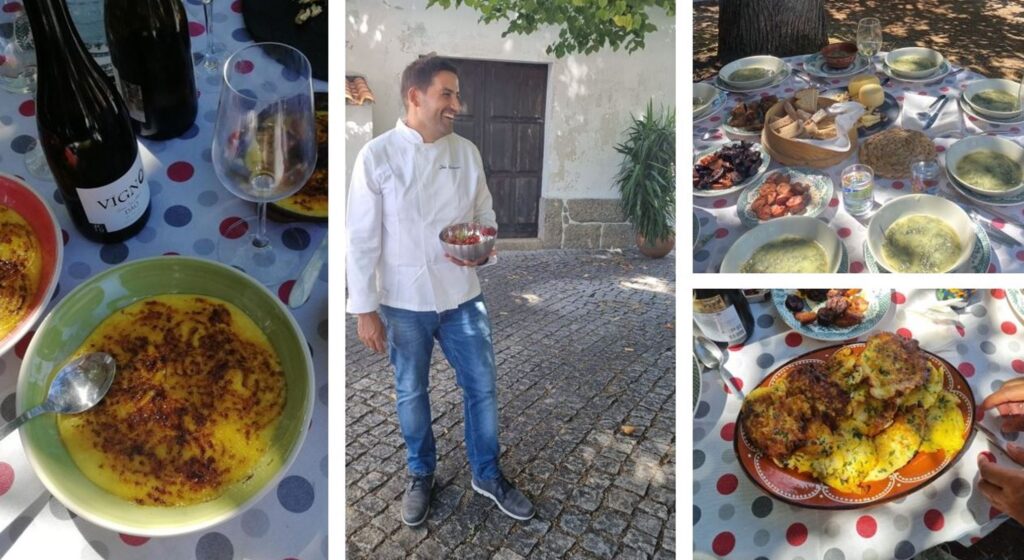
A fun way to learn more about Portuguese cuisine and food culture is the cooking workshop by Portuguese chef João Quaresma. A fun and educational experience with delicious and easy recipes. Together with the chef we will shop at the local market and then make a traditional lunch with fresh seasonal products.
Who is João Quaresma? Below is his story.
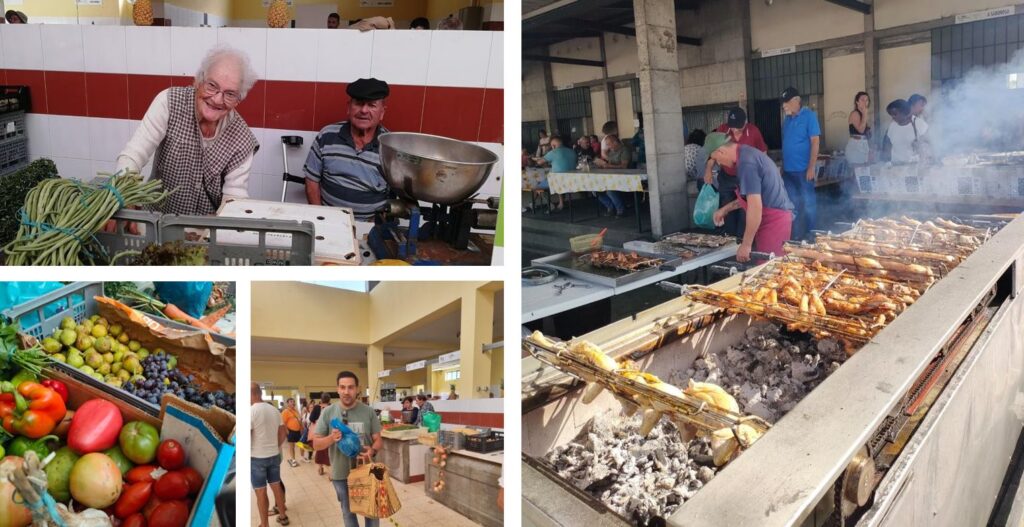
In 2014 you traveled around Europe with a food truck ‘Portugal, love at first bite’. How did you experience that trip?
It was without a doubt one of the most memorable experiences of my life. It was three unforgettable months. In 2014 we traveled through ten countries and visited Paris, London, Brussels, Amsterdam, Munich, Berlin, Poznań and so on to give a taste of Portuguese gastronomy to hundreds of people and to tell and tell them about the products and dishes I love so much. I have many fond memories of the Portuguese who are now living in other European cities and countries. With many I still maintain contact.
Portugal has many stories and legends about dishes, tastes, people and regions written down over the centuries. Do you know any such stories?
There are many stories and legends about Portuguese food. The one I highlight here is that of the Alheira, a traditional Portuguese sausage, originally invented by Jews, who had fled from Spain and formed several communities in Portugal in the fifteenth and sixteenth centuries. One way to escape the Inquisition, which persecuted and killed them, was to feign Catholic rituals and traditions. To deceive the Inquisition, in Trás-os-Montes they invented a sausage made from bread, chicken and olive oil. They resemble a traditional sausage made from pork, but that is forbidden in their culture. Thus was born the Alheira, which has saved so many lives and is a delicious sausage.
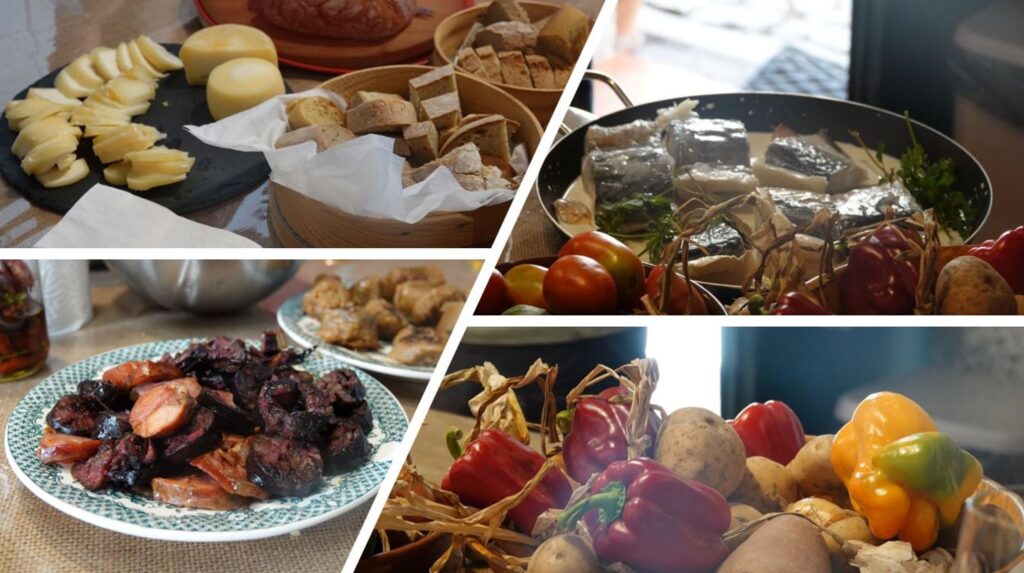
How did you become a chef? Was it a childhood dream of yours?
It was not a childhood dream of mine to become a chef, but I grew into it over time. I majored in tourism. When I went to college, I could barely cook, but I had to, and over time I started to like it more and more, and I was lucky enough to share a house with a guy from the North of Portugal who could cook very well and always brought quality products, including Alheiras. From there, my enjoyment of cooking grew. When I started working in tourism, I often visited restaurants and hotels, turismo rural and wanted to know and learn more and more about cooking and restaurant management. In fact I want to create turismo rural and to cook for customers myself. It was never my intention to have a restaurant full time. In 2008 I decided to take a cooking course at Escola de Hotelaria e Turismo in Coimbra and in 2010, when I finished, after an internship in a restaurant in Lisbon - Tasca da Esquina, I created the Chef at Home project. Little by little, I organized private events, gave classes, workshops and advice to small restaurants.
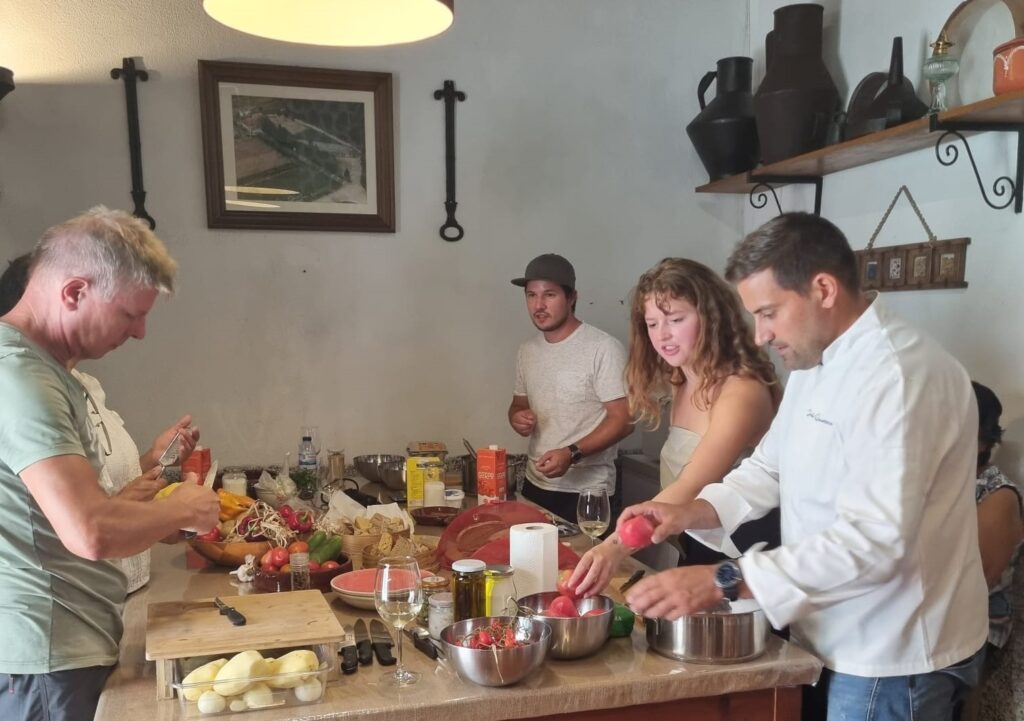
In 2014 I traveled around Europe, through 20 cities, with a food truck to promote Portuguese gastronomy, regional products ánd tourism. From then on, I had more and more invitations to events and started cooking for hotels and small turismo rural locations at specific themed events. This is what I still do. I cook at clients' homes and during themed events, I give training and workshops and I still work in the field of tourism. What I want to do now is a combination of tourism and gastronomy: visiting a market and small producers and holding small-scale workshops. I have an old grocery store and tavern in Lagos da Beira, a village near Oliveira do Hospital, that I like to use for these programs.
What is your greatest memory?
Without a doubt, traveling around Europe to be able to see and understand how Portuguese people, abroad, experience food and the memory of Portugal. Another fond memory as a chef was when I cooked for a group of volunteers in 2017, helping victims of the fires in Oliveira do Hospital. To do something for them with something I love doing myself was a particularly enjoyable experience.
What do you love most about Portugal?
The quality of Portuguese products: fish, bread, olive oil, meat and vegetables due to the great climate, fertile soil, people and sea. I am proud of Portuguese people. We are hospitable and enjoy helping and welcoming people.
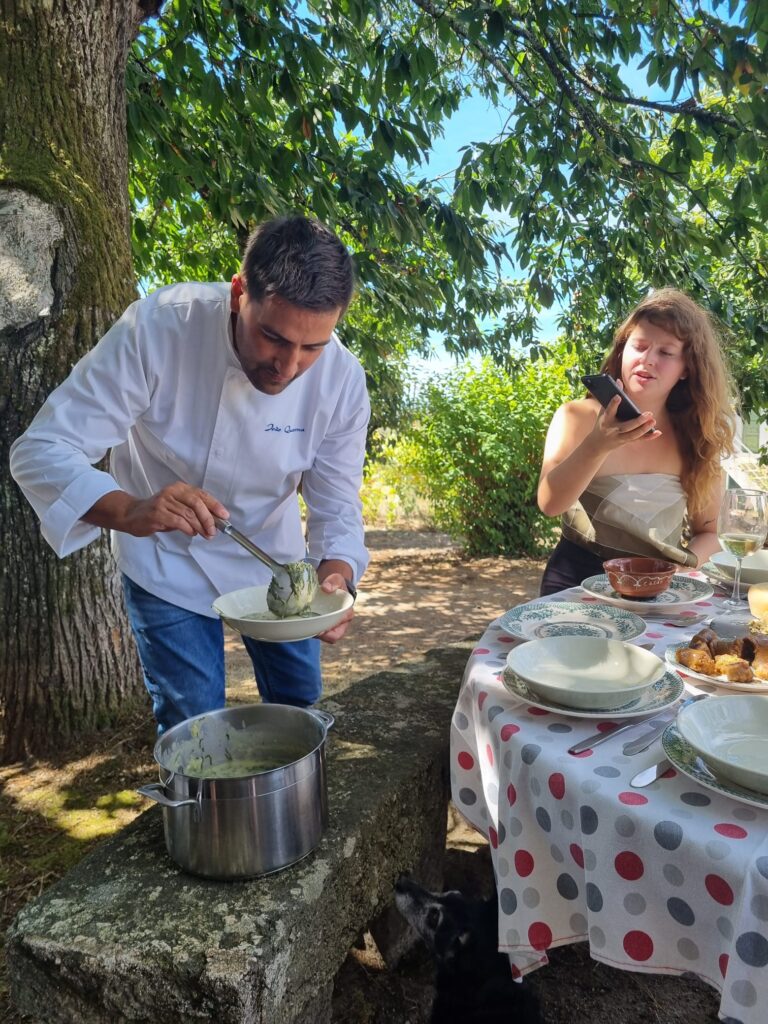
What Portuguese habit in daily life do you appreciate the most?
A coffee and a pastel de nata in the morning. It helps to start the day with the right dose of energy and sweetness.
What is your favorite Portuguese dish?
Bacalhau com todos [= boiled cod with cabbage, carrots, potatoes and egg] .
What is the difference between Portugal and other Mediterranean countries?
The people. Their generosity, authenticity and willingness to always welcome and treat the other person as if they were their family.
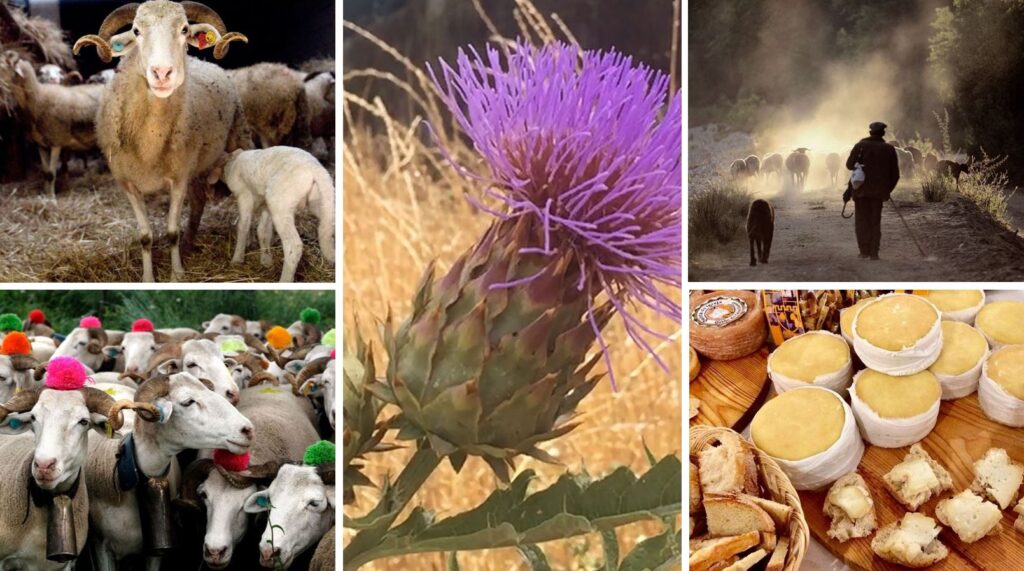
The Serra da Estrela cheese is the oldest Portuguese cheese and recognized as one of the most special cheeses in the world. The production process is still traditional. In 1287, King Dom Dinis established the first cheese factory in Serra da Estrela. At that time, the cheese was already tasty and nutritious with an excellent shelf life and therefore regularly present on the travels of the shepherds and great explorers of the time. In 1996, the European Union granted it a protected designation of origin for quality and authenticity (DOP label).
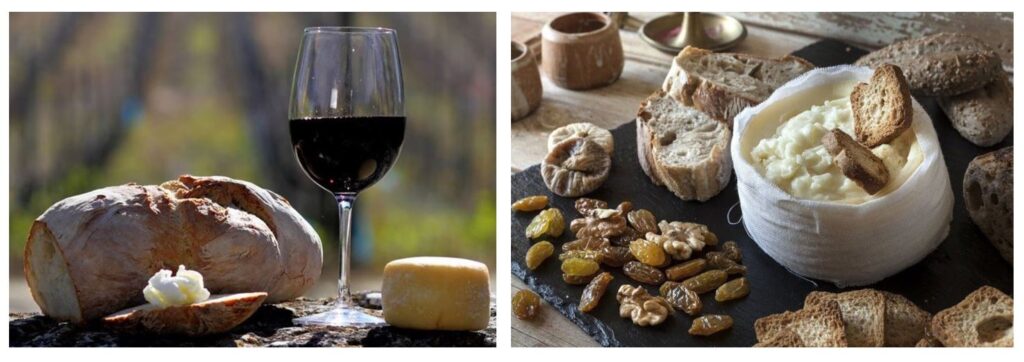
What makes the cheese so special?
The cheese has been made by hand for hundreds of years. The preparation is completely artisanal. It consists of only three ingredients: raw and whole sheep's milk, thistle flour and sea salt. Serra da Estrela cheese is made only from the milk of the Bordaleira da Serra da Estrela or Churra Mondegueira breed, which graze freely in the mountainous area of the Serra da Estrela. This involves manual milking, filtering the milk through white cloths, adding ground thistle flour with salt and a whole process of filtration, pouring, salting, pressing and aging that is carried out in several stages, carefully maintaining times and temperatures.
What is the result?
A cheese with a semi-soft buttery interior and a yellowish-white color with a persistent aroma and flavor, pure, strong and slightly spicy.
During the Christmas season, the natural beauty of the mountain village of Cabeça is transformed into a truly authentic Christmas market. Christmas traditions are lived so intensely here that the village was named "Cabeça Aldeia Natal. The picturesque streets of the village are decorated with many lights and natural Christmas symbols from the surrounding pine forest. Beautiful handicrafts made by the locals. Throughout the village you can enjoy typical regional delicacies. We went to Tasca da Capela for a sandwich "bifana" and "caldo verde. We ended the evening with a delicious bubble waffle at the mobile creperie. Fun fact: In 2011, Cabeça became the first village in Portugal to replace all its Christmas lights with LED lights.
Mata do Buçaco is a half-hour drive from our house, located in the Serra do Buçaco mountain range in the municipality of Luso. It is a 105-hectare forest created by monks with many hiking trails and exotic trees and plants from all over the world. The forest is considered one of the most unique and valuable areas in Portugal. In the words of Portuguese writer José Saramago: "Mata do Buçaco cannot be described, the best thing is to get lost in it."Especially in summer, when it is hot, this beautiful forest offers a wonderful cool atmosphere.
A short story about the Mata do Buçaco and its palace. A mix of nature, history, religion, architecture and beauty.
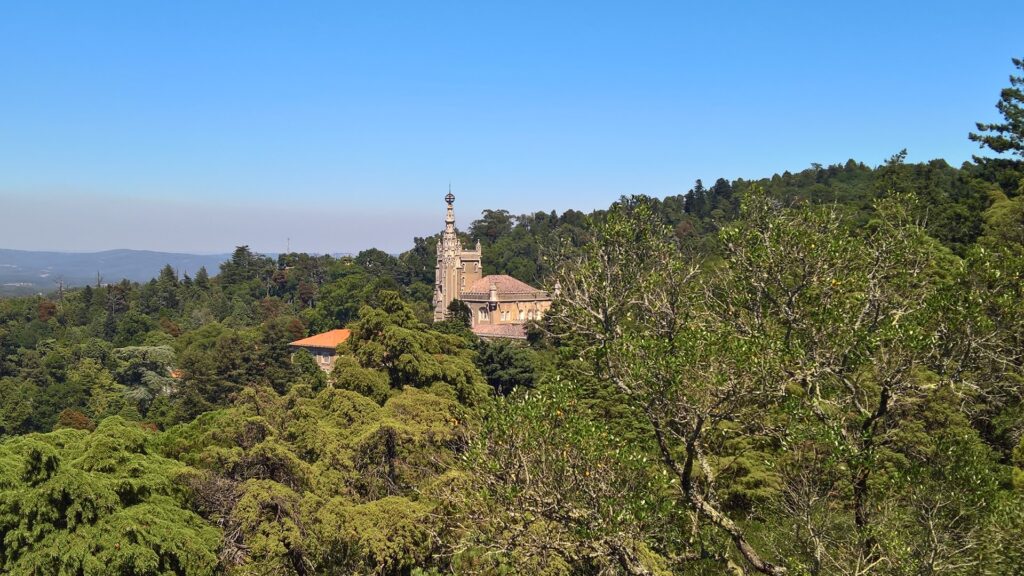
In 1628, a group of Carmelite monks settled as hermits in the then forest of the Serra do Buçaco. To keep their minds busy, away from temptations, depression and laziness, the Carmelites built a monastery "Convento de Santa Cruz do Buçaco" and began planting an exotic forest, for which Portuguese sailors collected the species on their voyages. The original forest was reforested with many native and exotic plants and trees, such as cedars, redwoods, ginkgo trees, tree ferns. For two centuries the Carmelites lived without possessions, in seclusion in an environment of tranquility.

The Mata do Buçaco has several paths, steps, bridges, fountains and ponds. The 'Via Sacra': sacred path that tells the story of Jesus with the cross, with chapels along the route. The 'Caminho das Águas': path over a monumental staircase of 144 steps with the famous fountain 'Fonte fria'. The 'Vale dos Fetos': path of the valley of tree ferns.
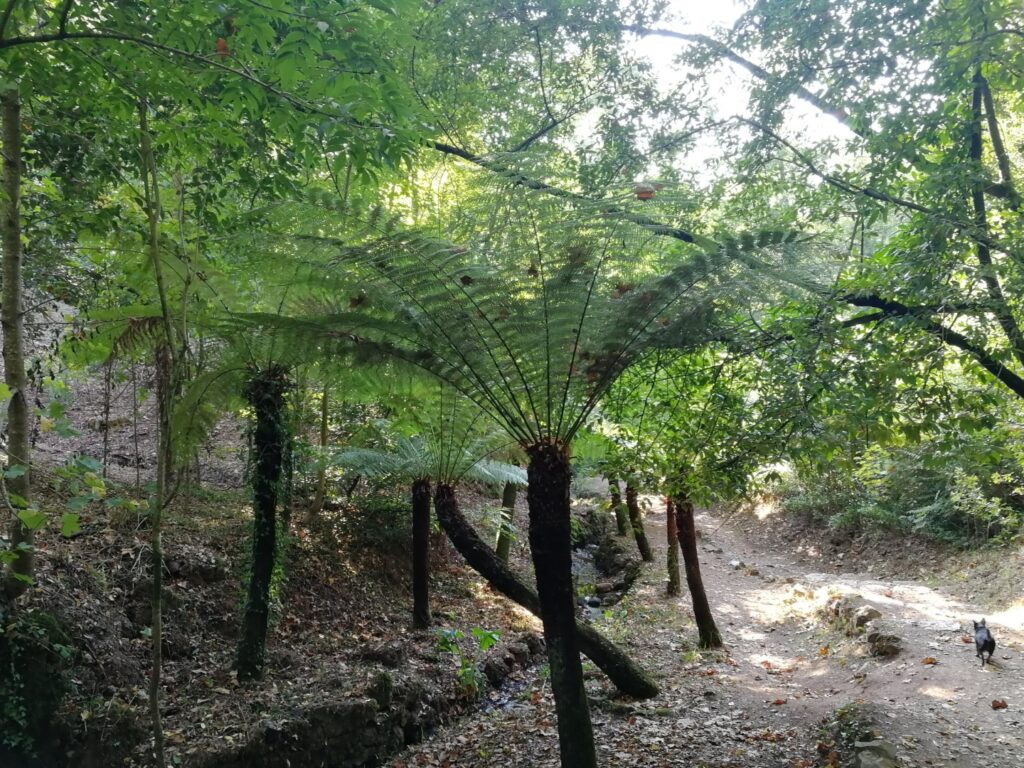
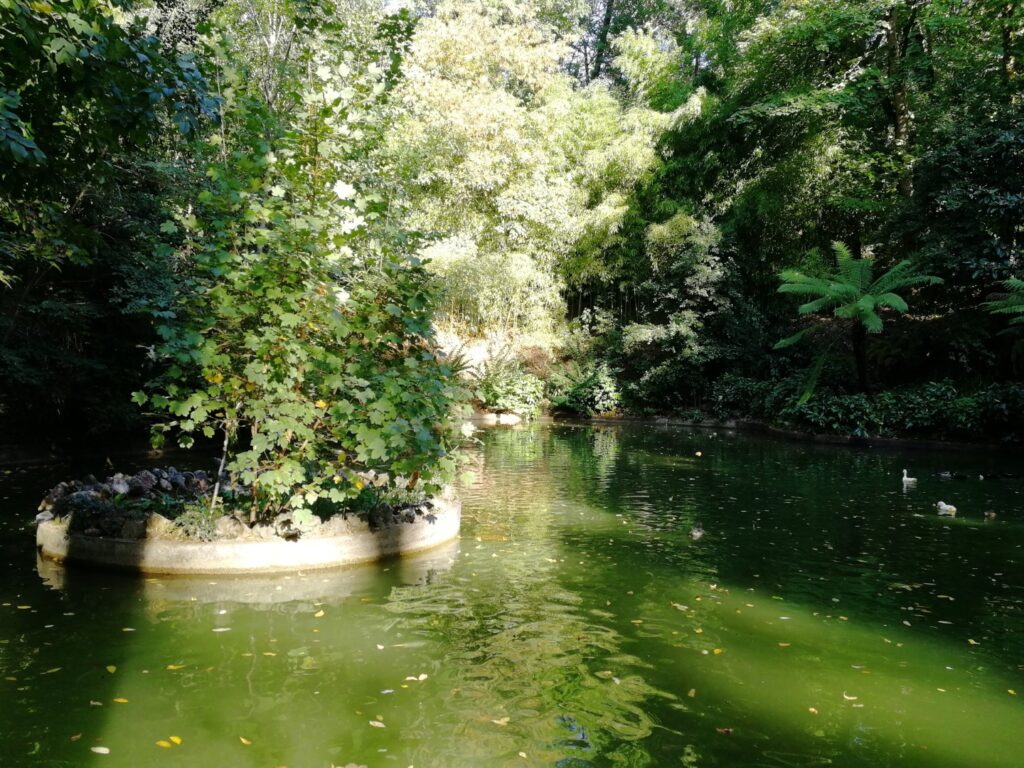
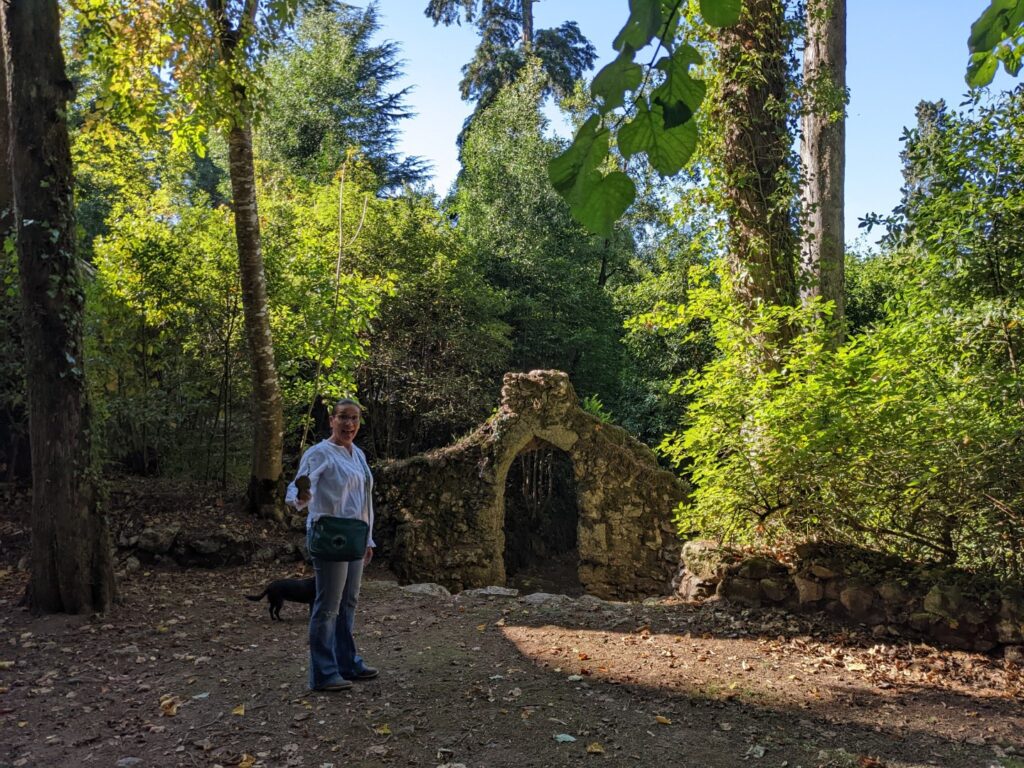

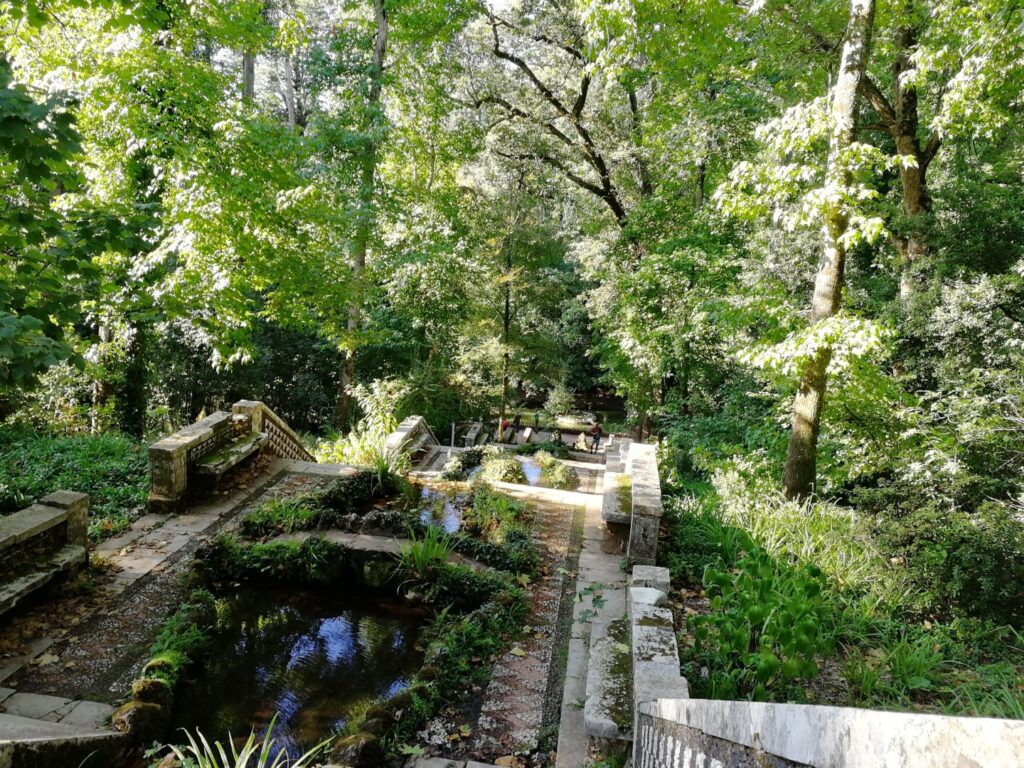
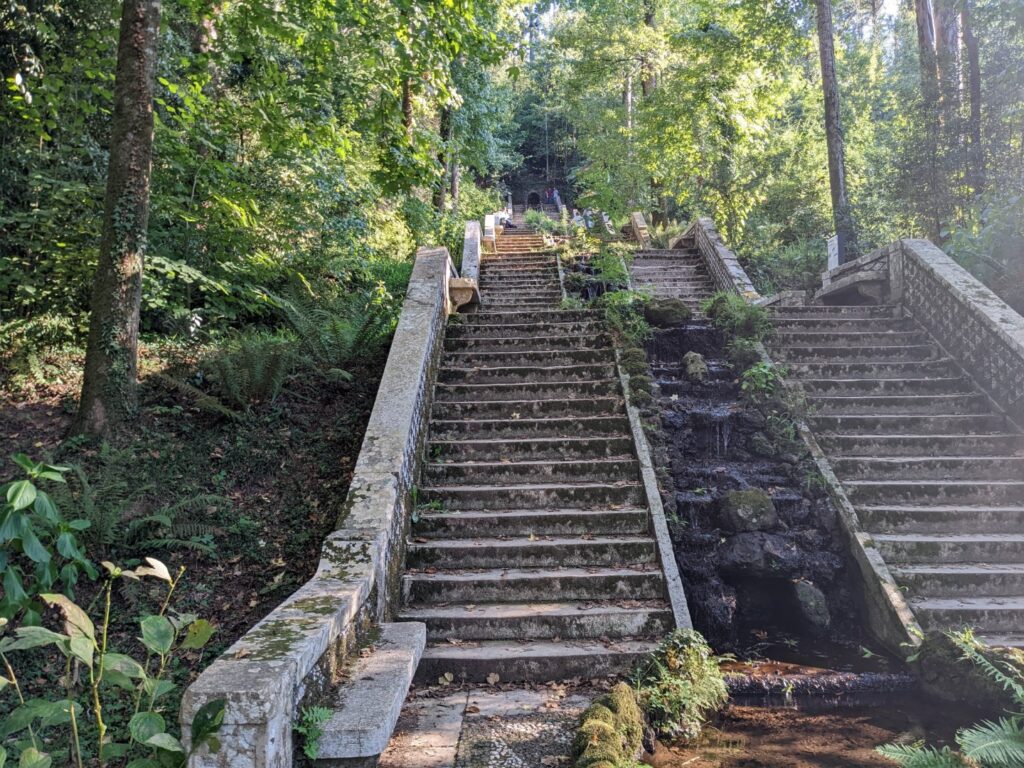
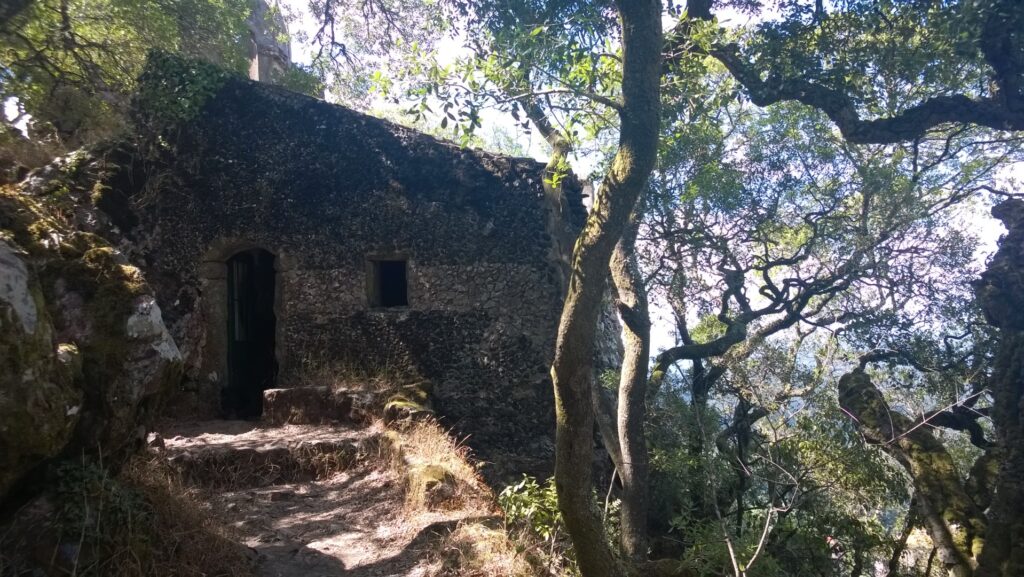
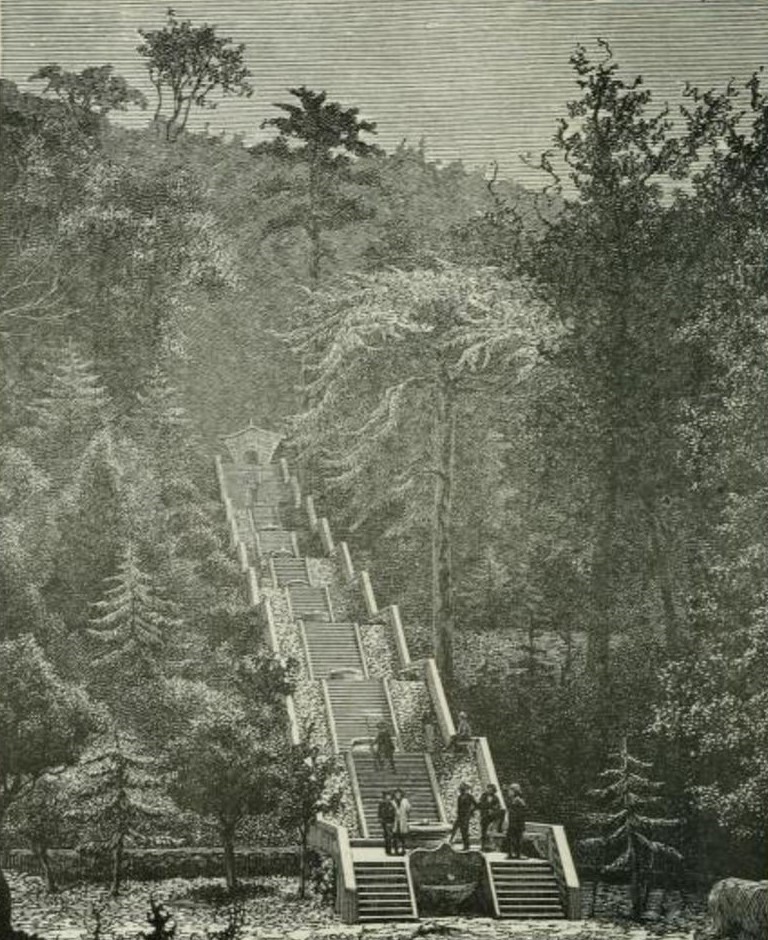
In 1834, religious orders were banned in Portugal and the monastery in Buçaco was closed. In 1888, construction began on a neo-manueline-style palace designed by Italian architect Luigi Manini. In 1907, the Palácio do Buçaco was completed. The galleries of the palace are decorated with tiles by ceramicist Jorge Colaço, and inside you will find a museum collection with works by famous Portuguese artists of the time, such as artists Carlos Reis and João Vaz.
In 1917, the palace became a hotel, which it still is to this day. The Palácio Hotel do Buçaco is one of the most beautiful, romantic and historic hotels in Portugal.
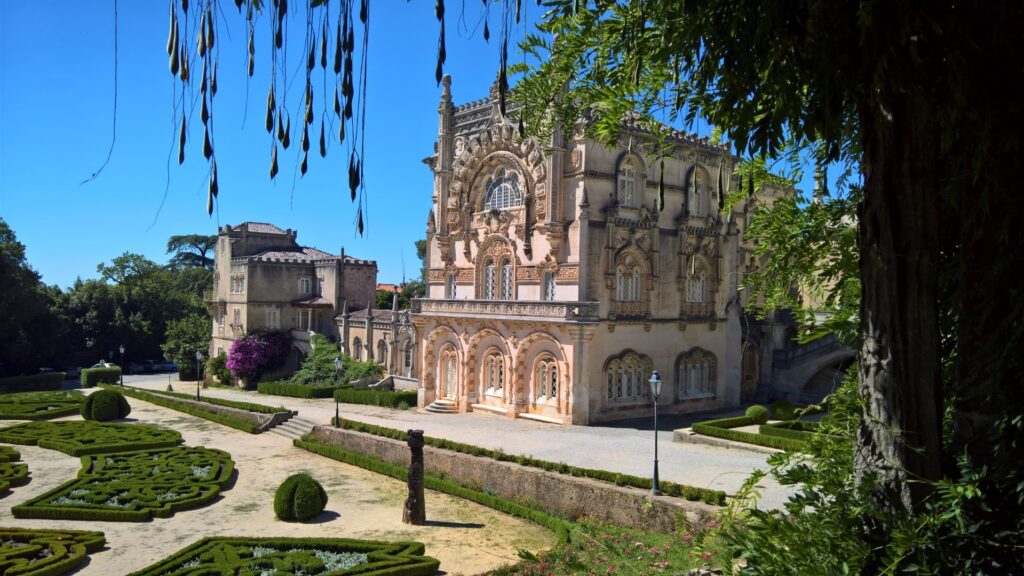
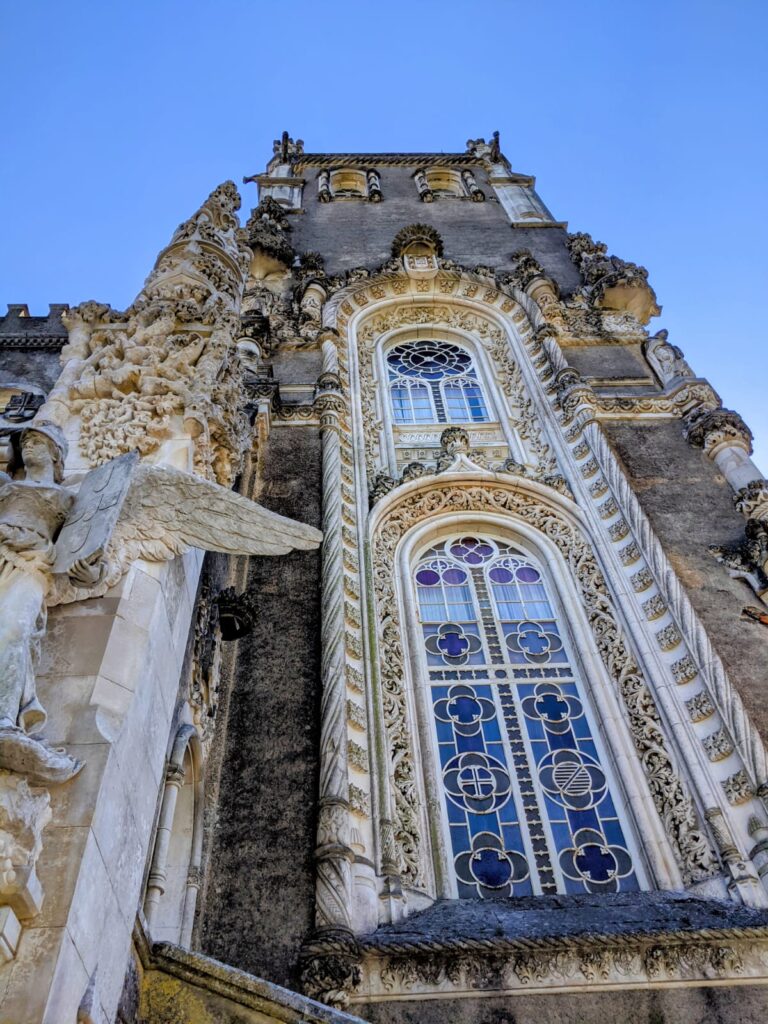
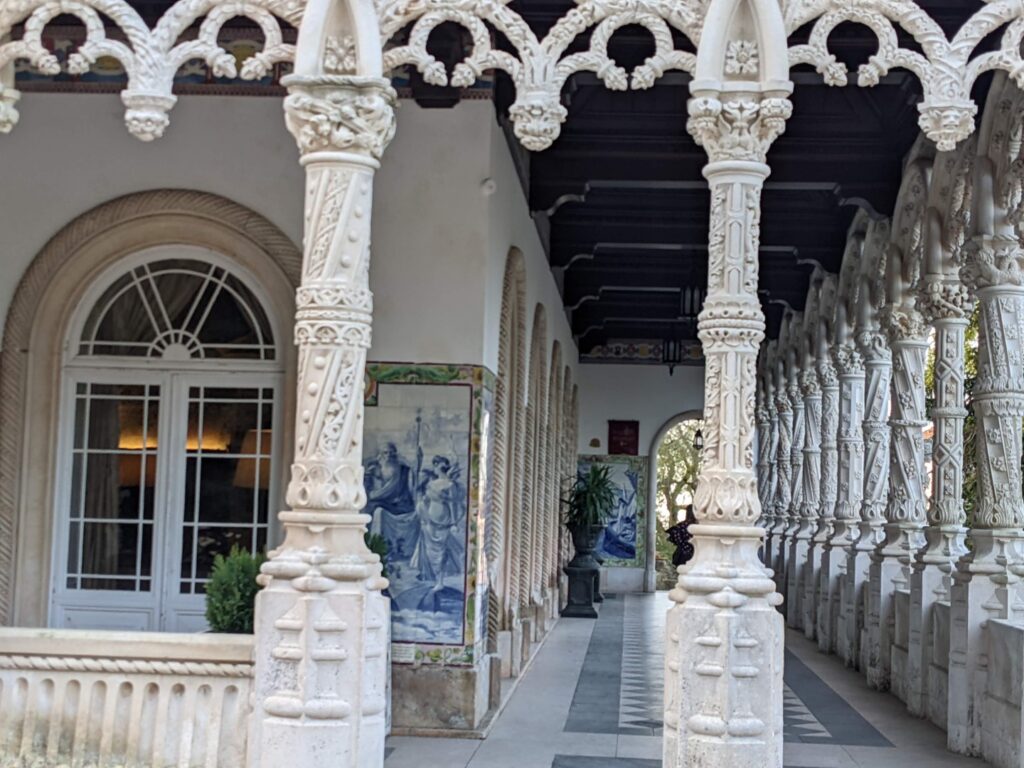

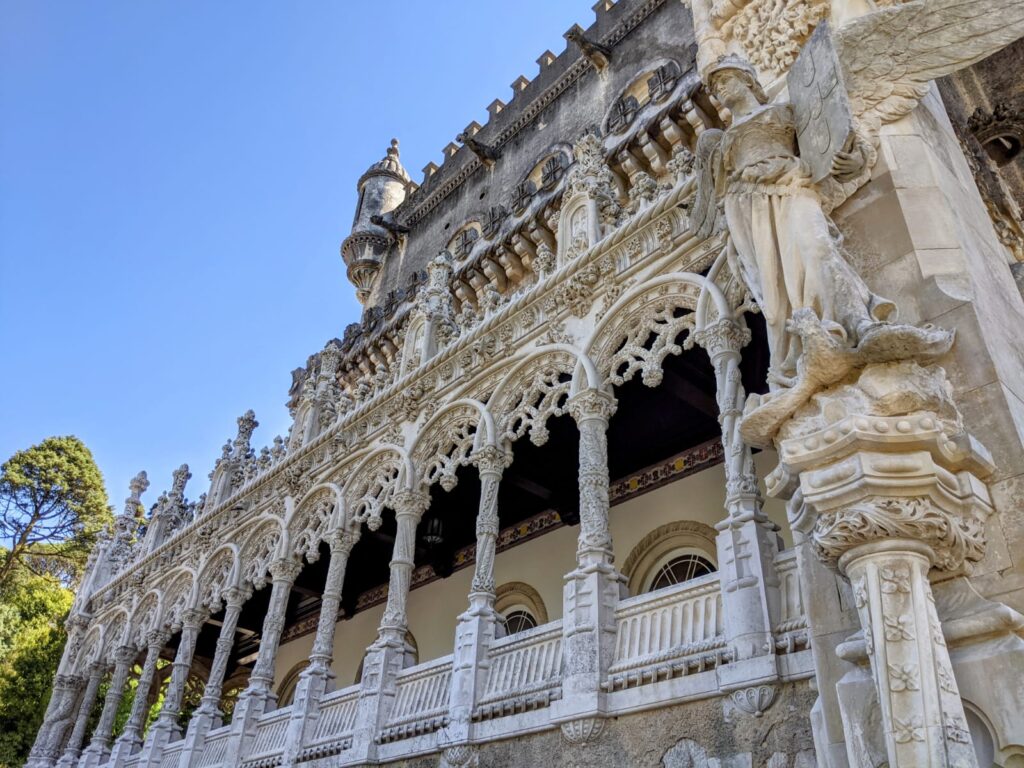
Special fact. 'Bos Madiba,' a tribute to Nelson Mandela.
'Bos Madiba' is located in the Mata do Buçaco, in a spot near the Palácio Hotel, as a tribute to Nelson Mandela. The spot aims to tell the life of the South African historical leader through one hundred trees, each linked to a passage from Mandela's life, also called 'Madiba.'

In the presence of Ndaba Mandela, grandson of Nelson Mandela and director of the Africa Rising Foundation, tree number 18 was planted, symbolizing Nelson Mandela's birthday.

The first 7-day workshop of Olá Moita took place on September 6, 2022. We look back on a beautiful and successful Life Story workshop at estate and campsite Quinta do Tapadinho in the old Portuguese village of Vila Nova de Oliveirinha.
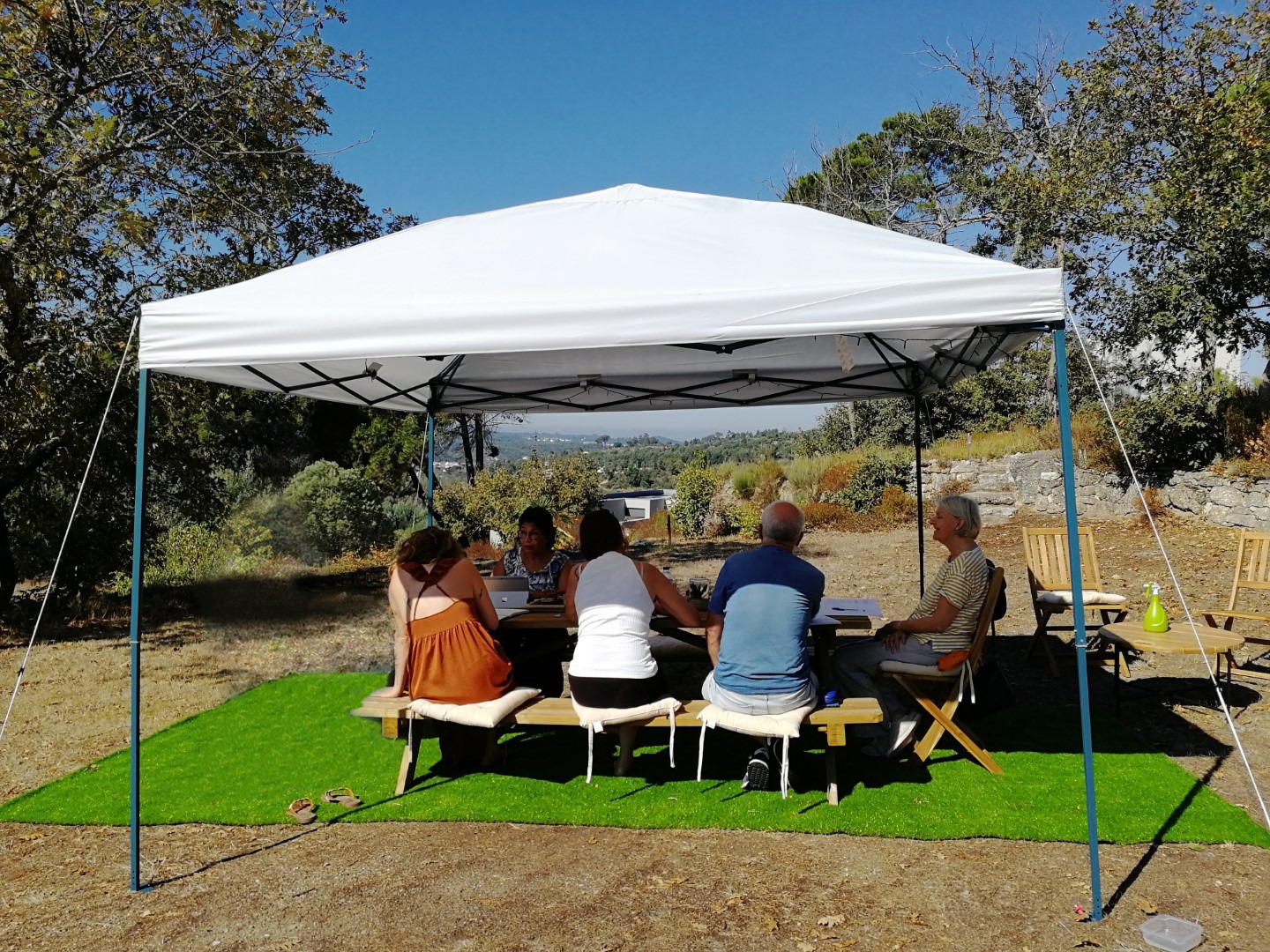
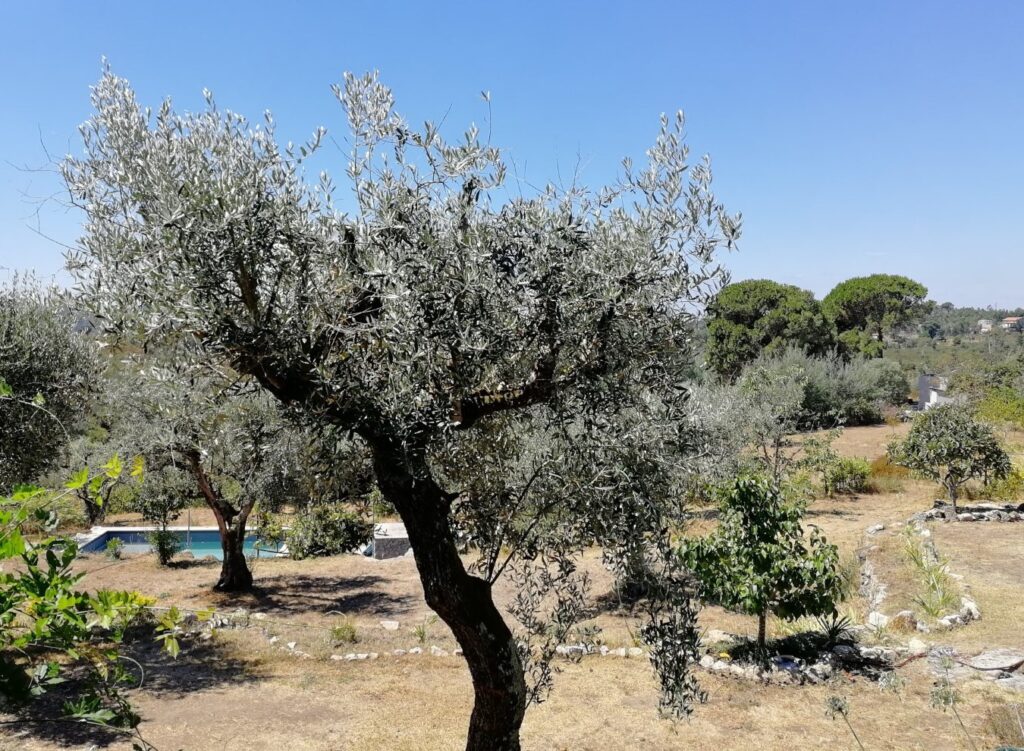
The participants enjoyed the sun, culture and nature, but especially the inspiring and great writing sessions led by Annie van Gansewinkel. To relax, we cycled through the beautiful landscape of central Portugal and ended the week with a cozy cooking workshop, provided by chef João Quaresma, where we prepared a traditional lunch together in an authentic kitchen on an estate of Quinta Chão da Bispa. The pictures below speak for themselves.
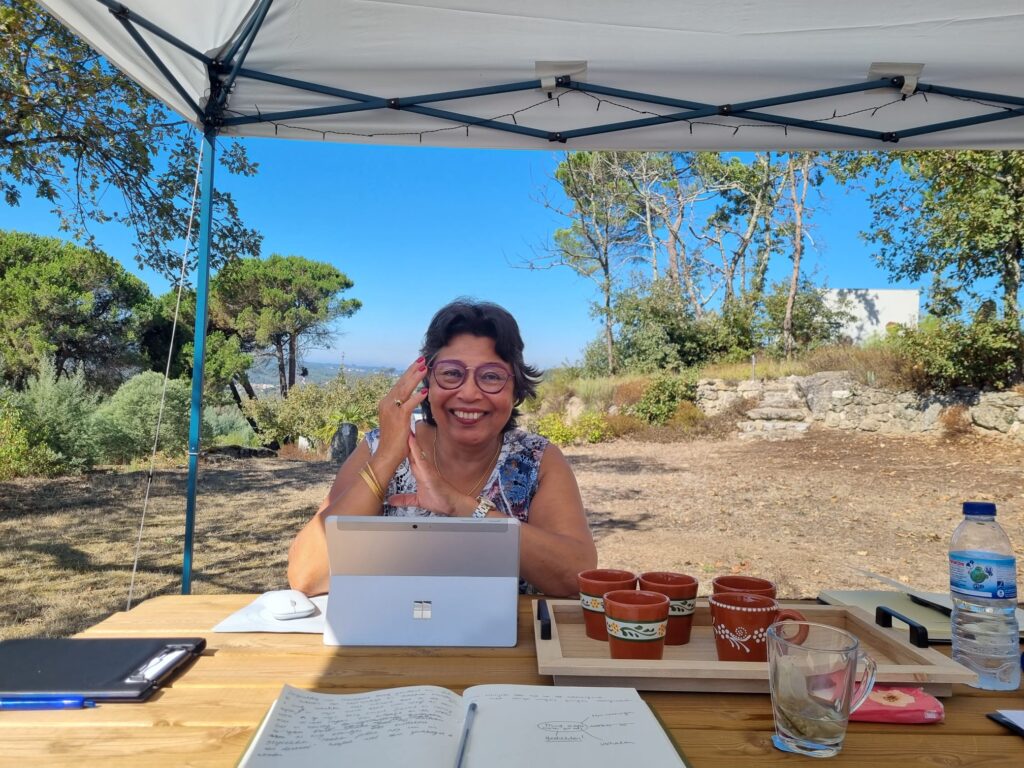
Here I am, as a participant, sitting under a party tent as shelter from the sun, looking out over the beautiful terraced campsite with wide views to the mountains in Portugal. Very eager to learn how the summer writing workshop "Writing your Life-Story" was going to turn out for me.
A beautiful and unique location that has an aura of tranquility.. I could watch the ever-changing views for hours.
A workshop given by a very experienced writer and writing teacher. My compliments on her preparation and approach. Giving assignments interspersed with technical tips on writing and the opportunity to engage with her to get answers to my specific questions. How wonderful is that!
I want to thank the organization and the owners of the campground for everything. I had a great week. Especially the activities in the program gave the workshop an extra dimension. Fantastic! It really went by way too fast.
Suset Wijnveldt
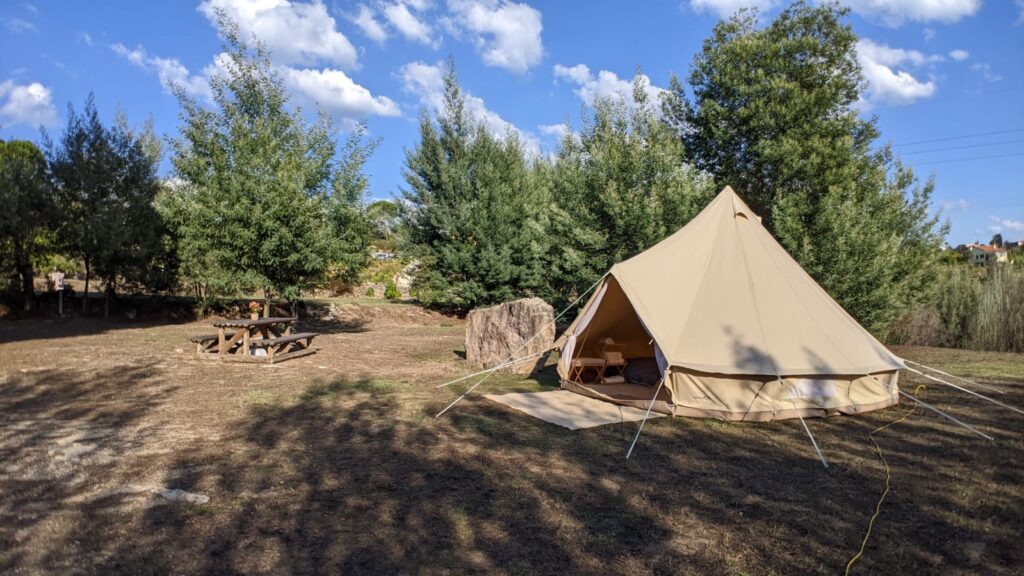
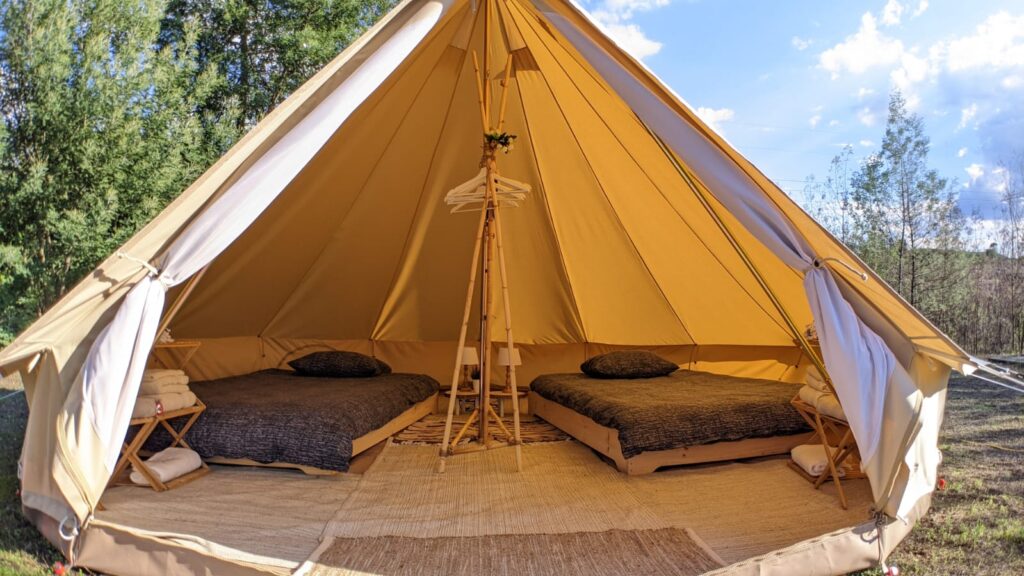


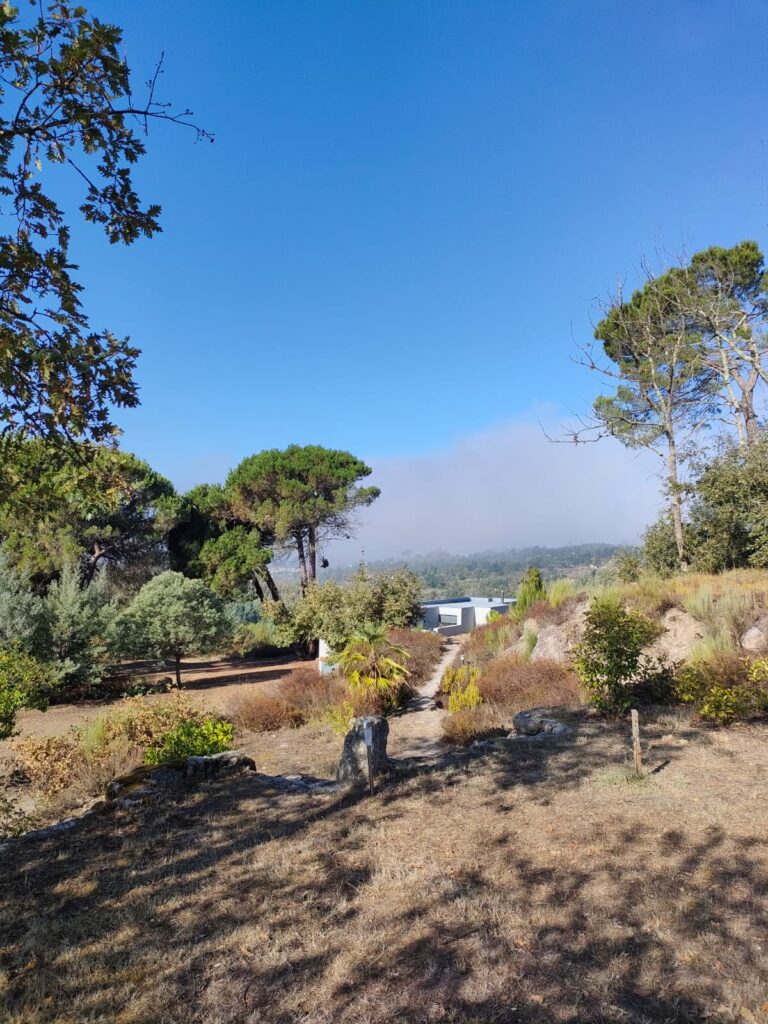
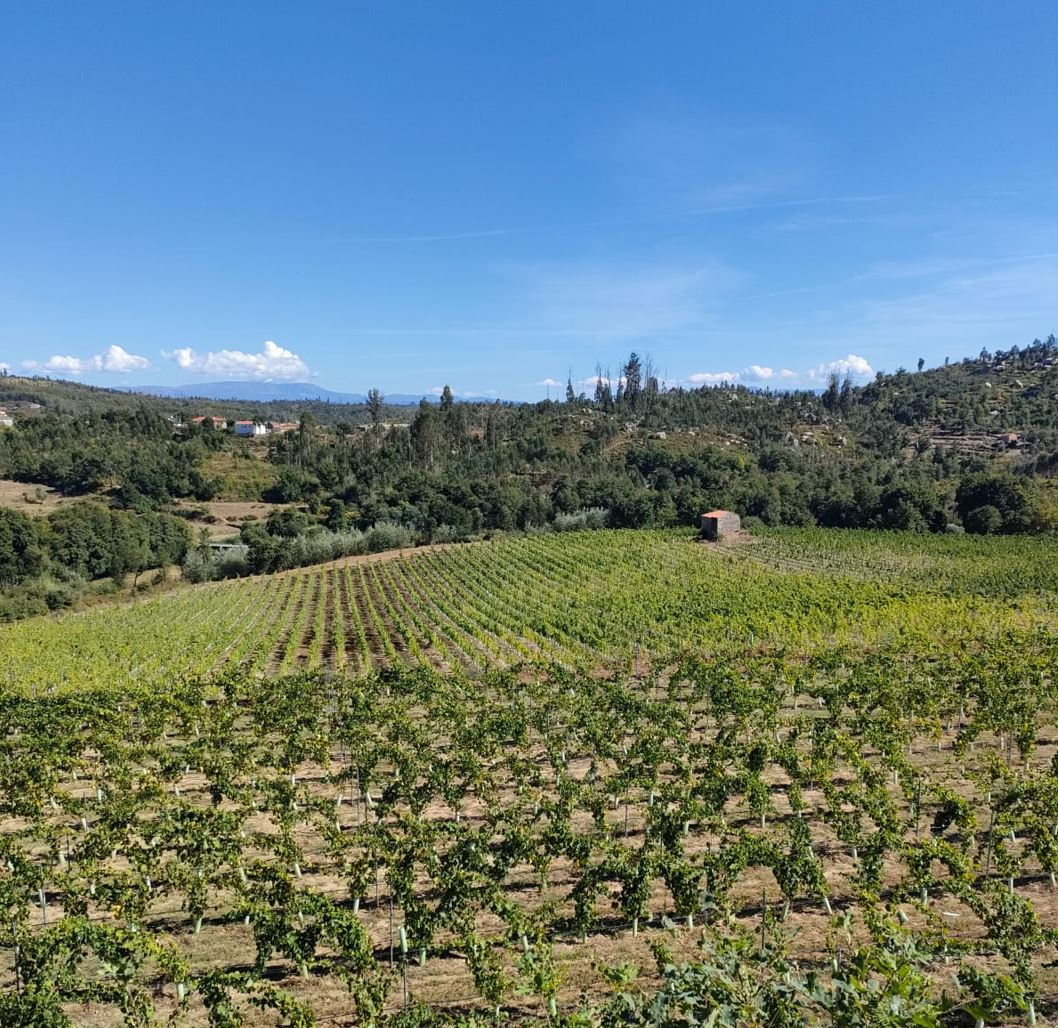

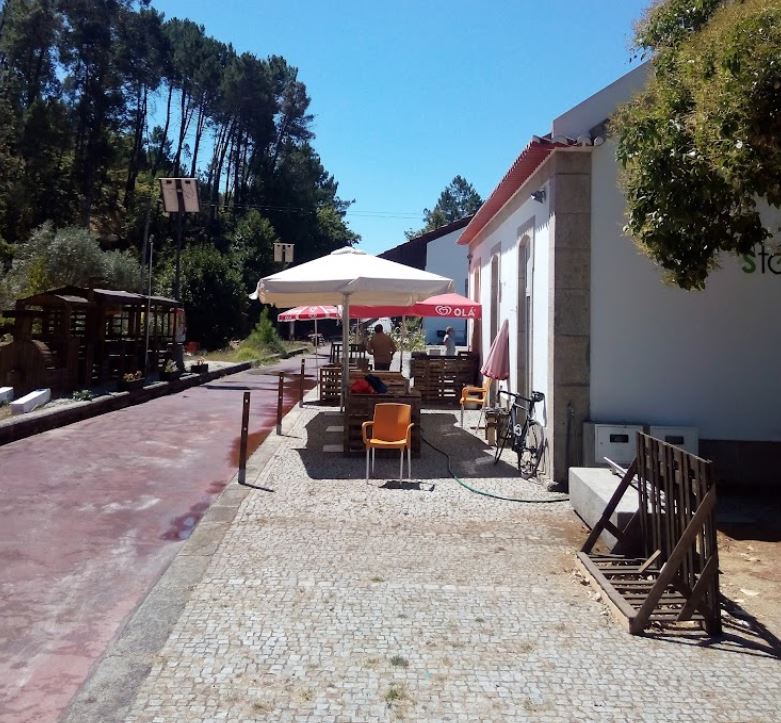
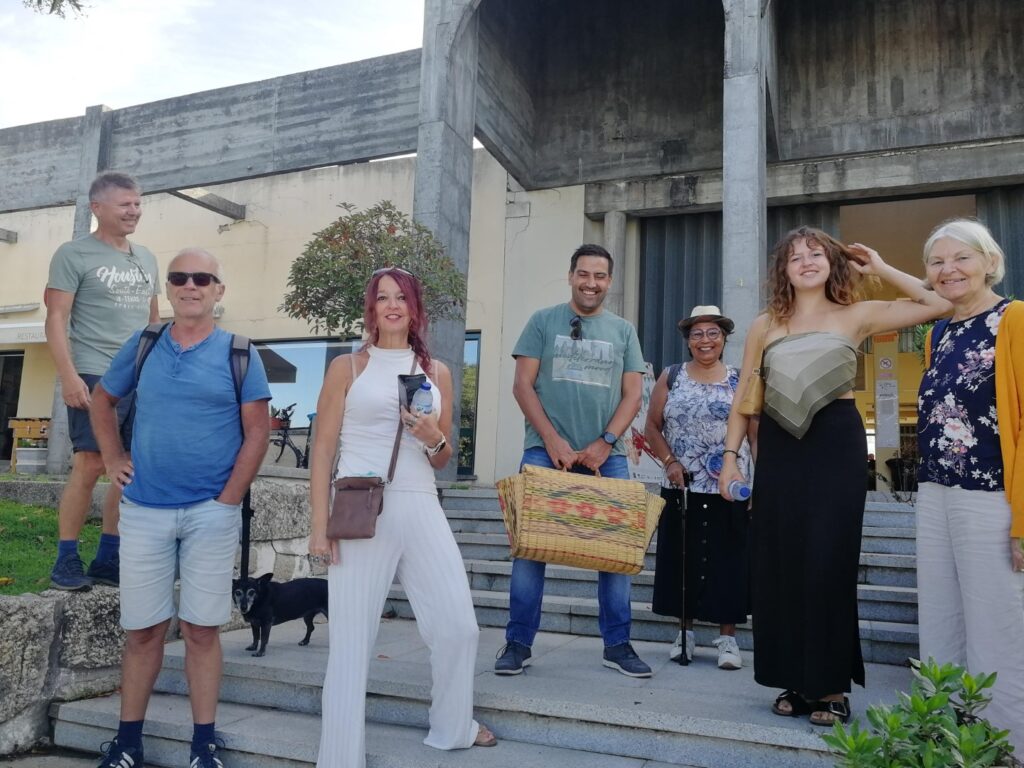
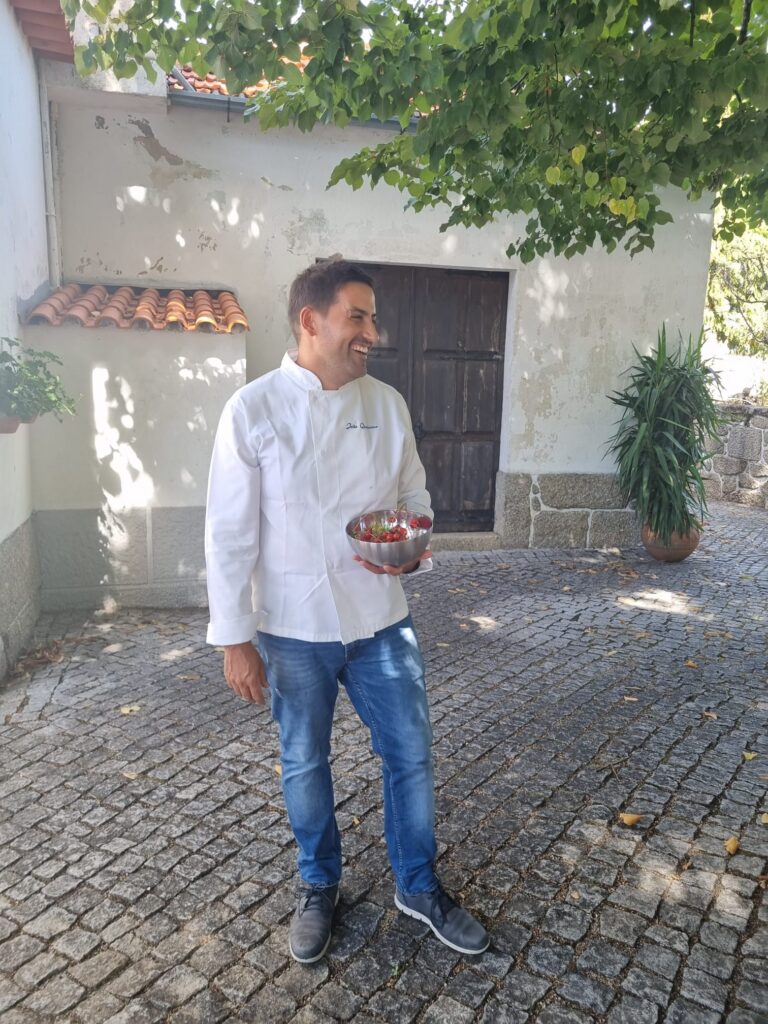
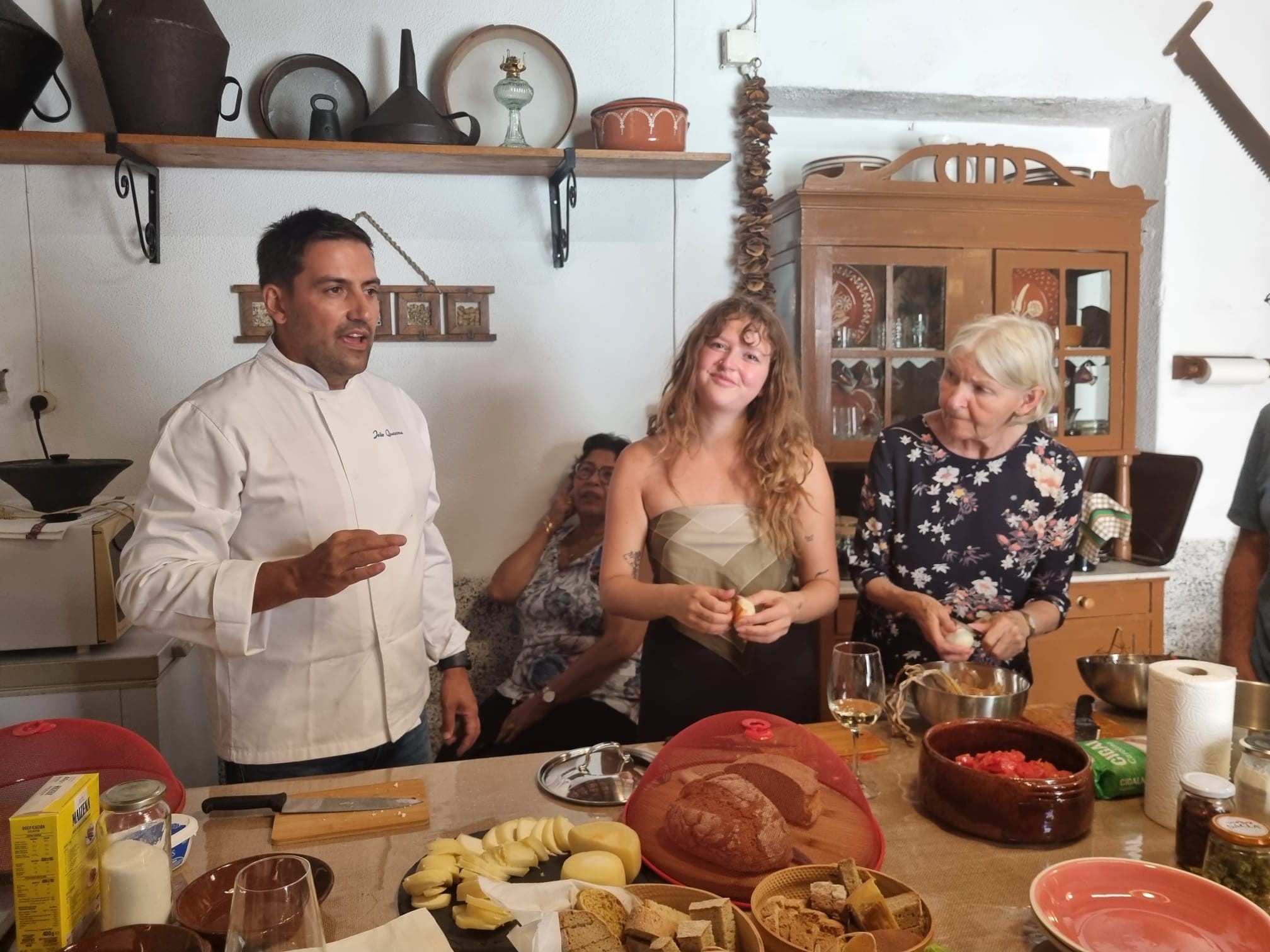
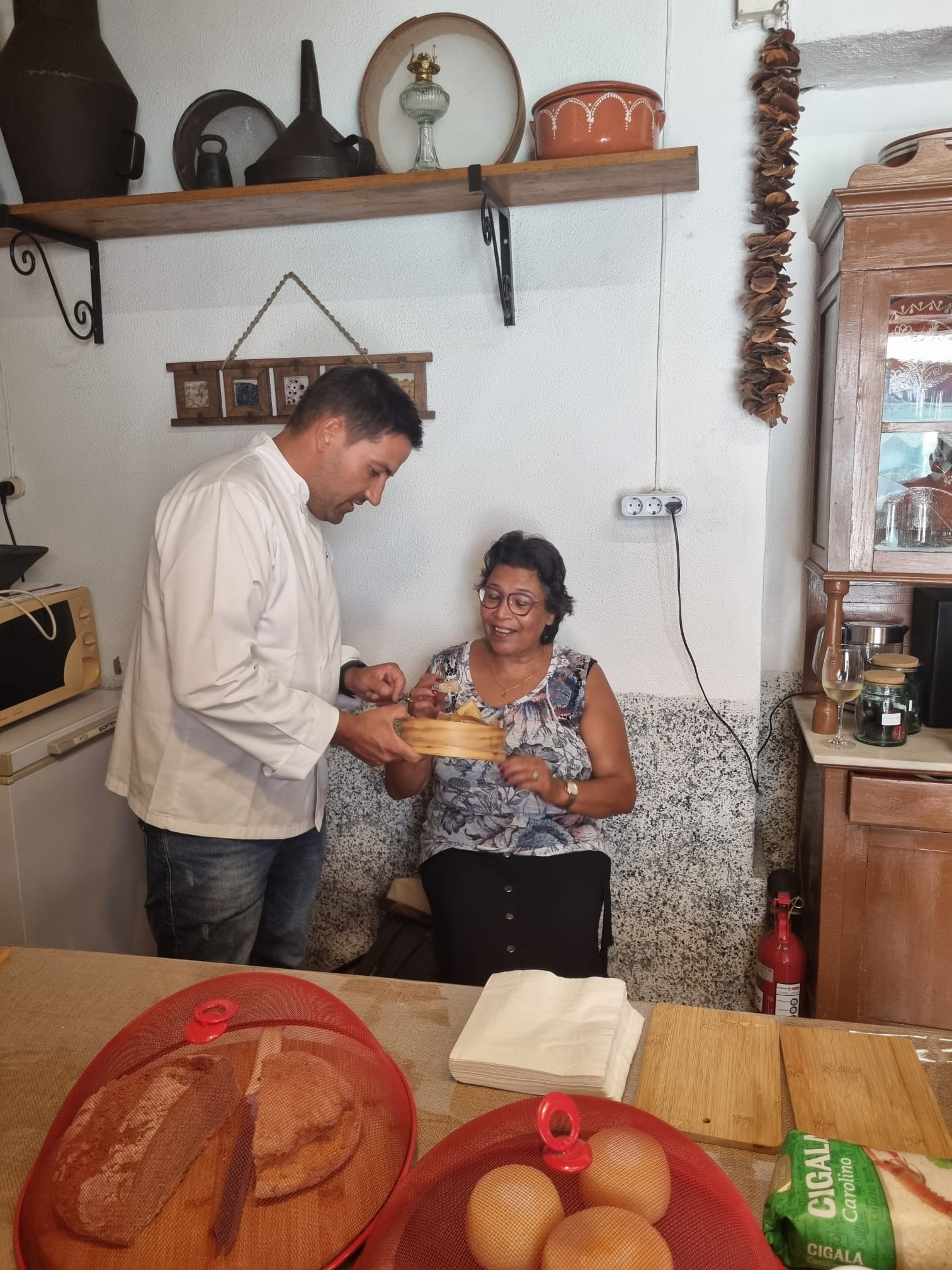


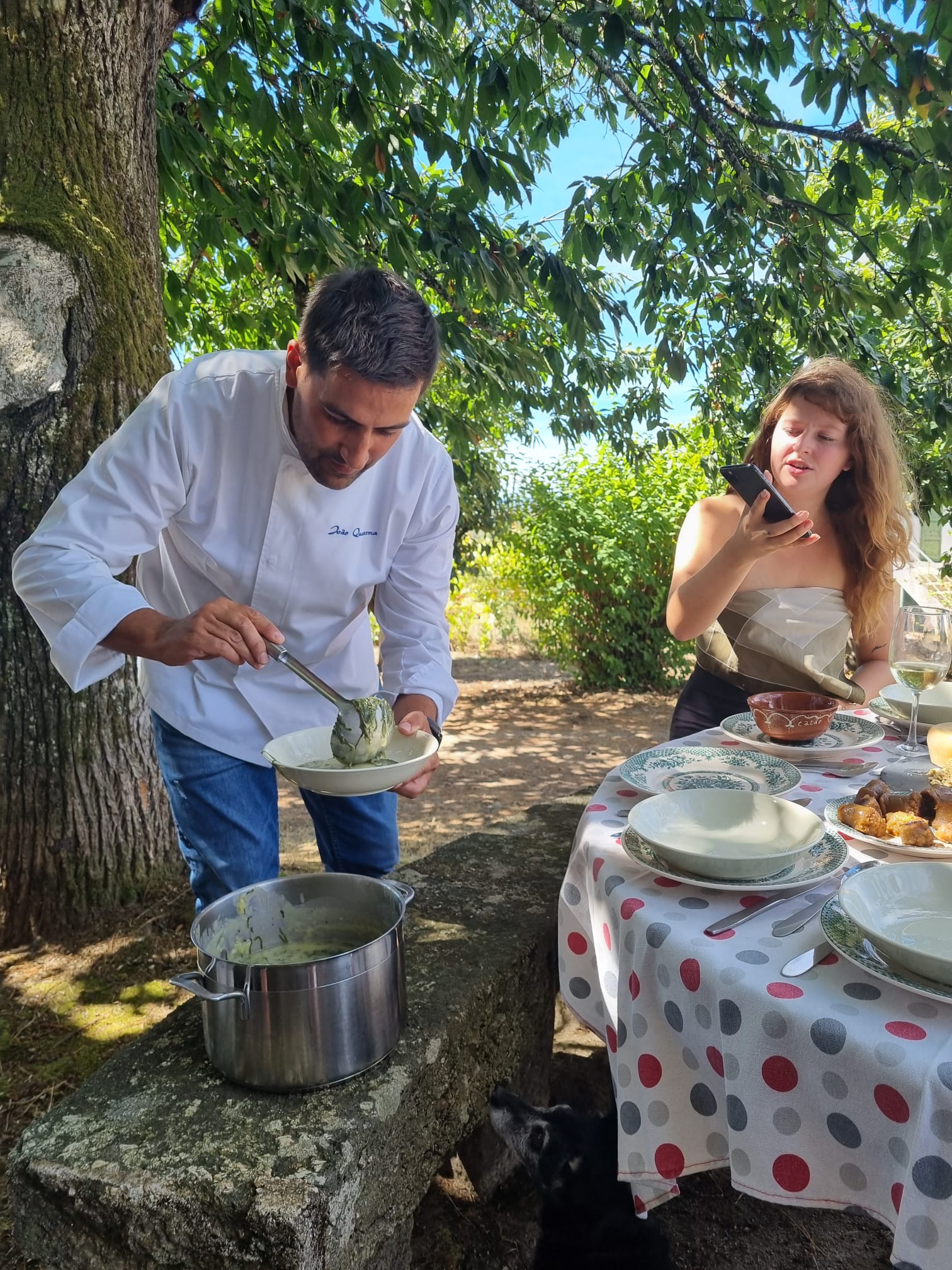
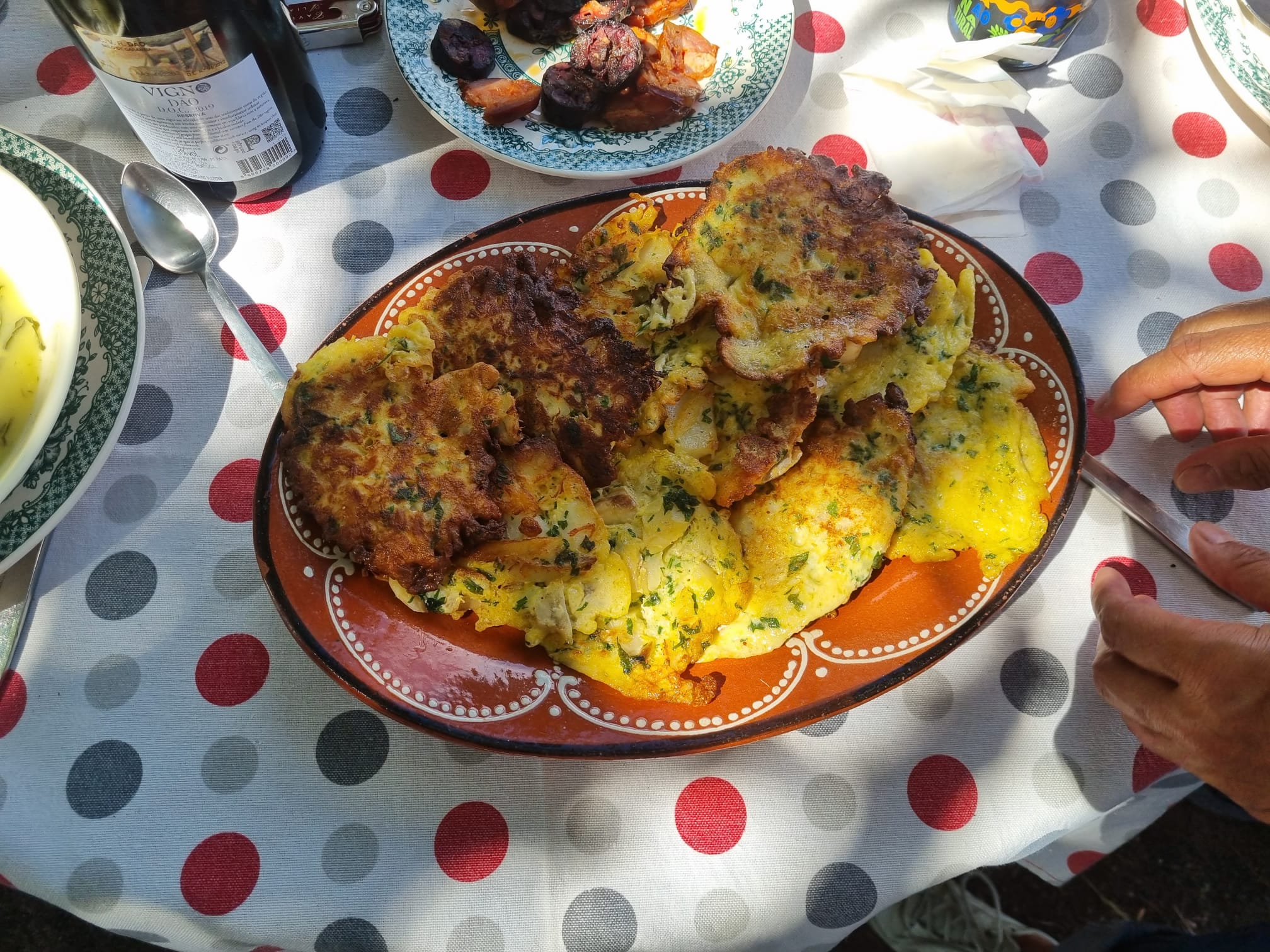

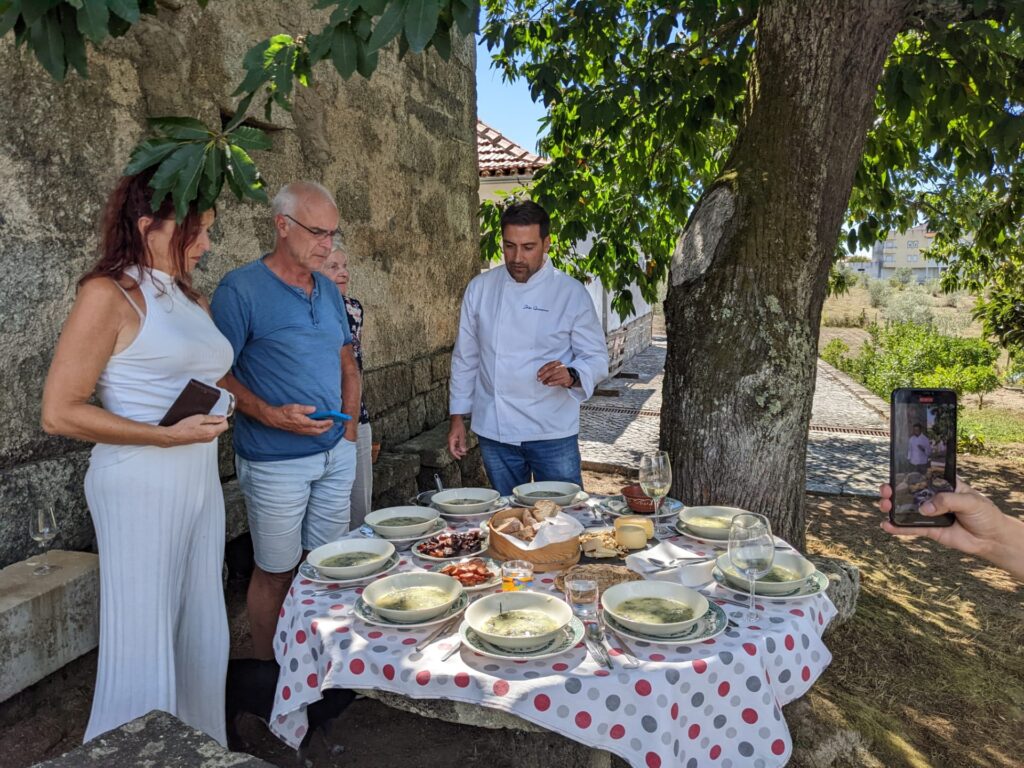
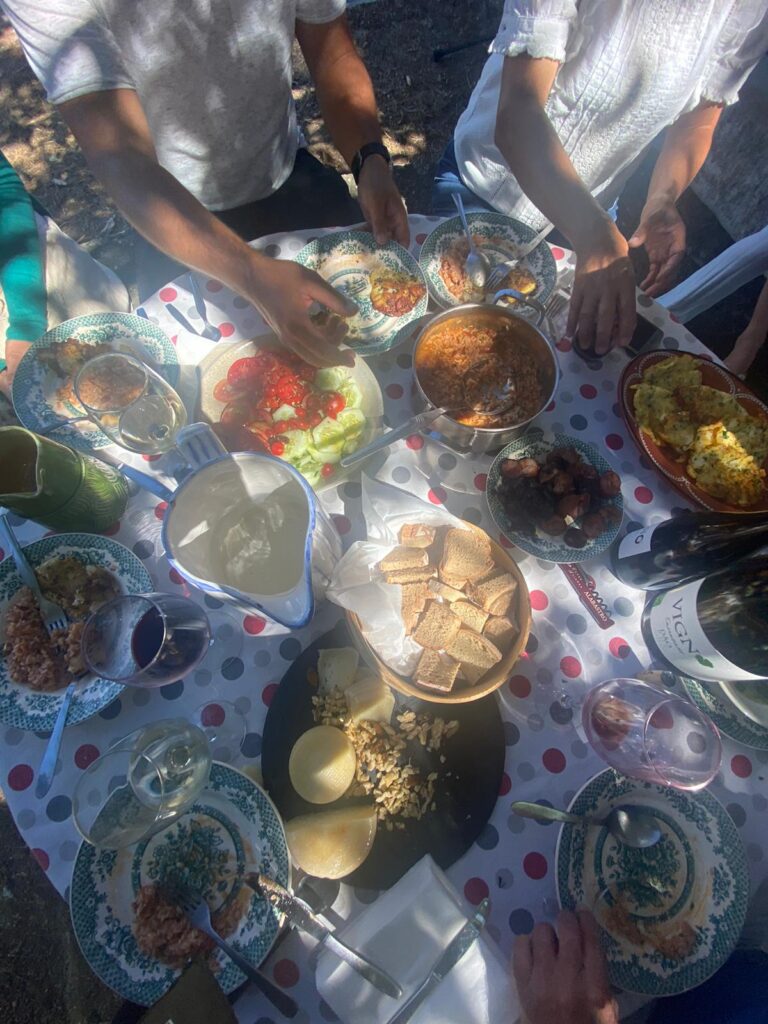
How did Annie experience the workshop? Read her blog!
On Sunday, April 24, the small village of São Geraldo celebrated the first spring festival in the region with an ancient tradition: "Tradicional Romaria dos Rebanhos.
In the early morning you can literally hear from the surrounding villages the shepherds and their flocks already walking towards São Geraldo. The traditional pilgrimage of the shepherds and their flocks. The animals wear bells for this holiday and some are colorfully decorated with pompoms and ribbons.
On that day, the shepherds gather with their flocks in the village of São Geraldo and then traditionally walk a few laps around the chapel to have their animals blessed for a fruitful year.